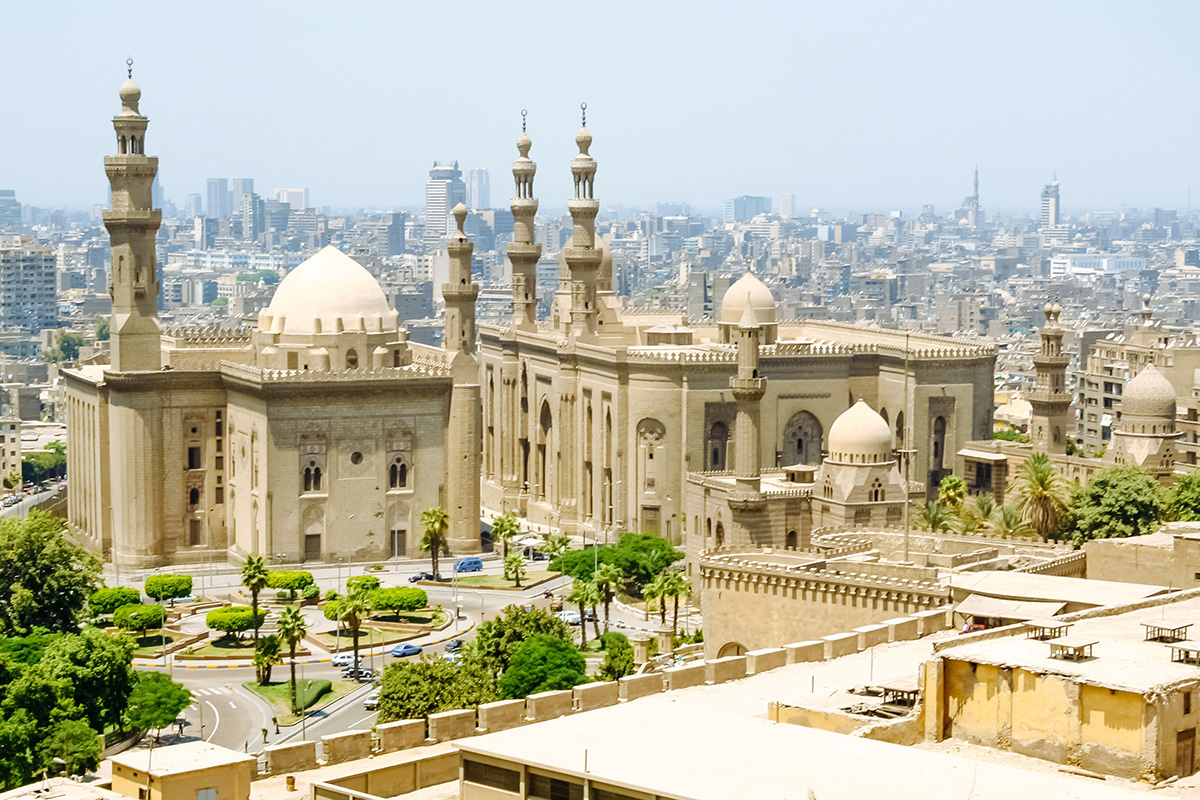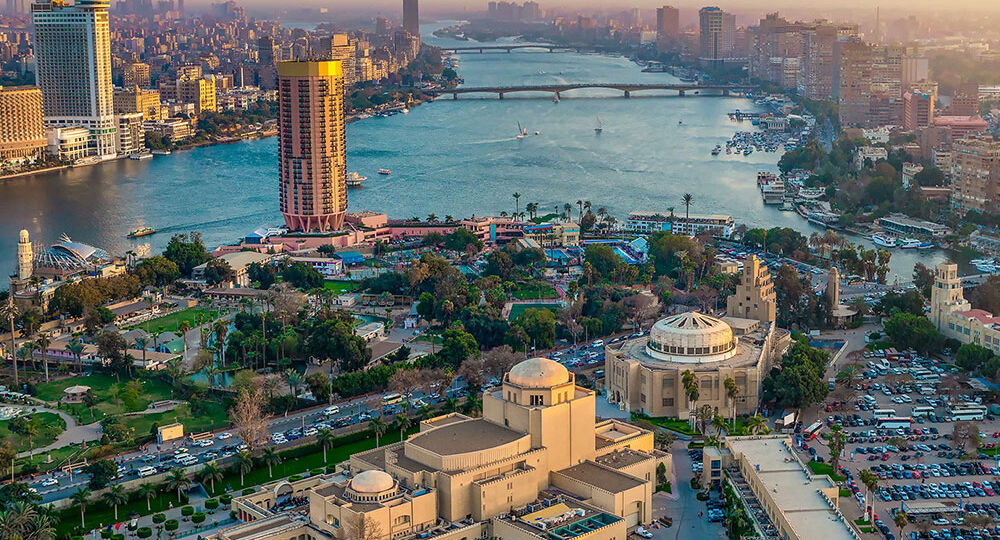
Pyramids? Sphinx? Nile or Egyptian Museum? Cairo is much more than that. This city is full of life, traditions, gastronomy and culture. Away from the usual tourist spots and urban places, just gauge into the soul of the city where the Egyptians live the essence of life.
The first time you’ll visit Cairo you will be amazed by the energy and dynamism of the city. The vibrant streets, the smile of people, and the traditions – they will make you fall in love with the place so easily.
Stroll in the city, starting by the beautifully designed mosques dwelling in the neighborhood along with the Coptic churches. While the Nile River rests calmly among the neighboring houses, you could take the felucca and flow on the slow movement of the water, enjoying the stunning landscape of both sides of the banks while listening to the legendary songs of Umm Kulthuum.
So, take a deep breath and brace yourself for an unforgettable trip around Cairo. As the Egyptians would say, welcome to Umm ad-Dunya – the Mother of the World.
Discover Cairo
Cairo Tower:
A modern monument of Egypt situated in the capital city of Cairo. The free-standing concrete tower is 614 ft. high and is one of the tallest structures in Egypt. The iconic structure is built using granite stones and boasts a classic architectural style.
Its shape imitates a lotus plant with lattice-work tubes fanning out near the top of the tower. The construction of the tower was completed in 1961 and it was inaugurated by the late Egyptian President Jamal Abdul Nasser. The tower stands tall in the Gezira district near Downtown Cairo just to the north of the Museum of Modern Art in Cairo.
It ranks as the fourth largest tower in the world and is about 45 meters taller than the ancient Great Pyramid. Three elevators having a combined capacity of 28 people take visitors to the top of the tower.
It offers a panoramic view of the city from the top. A crown shaped observation deck along with a rotating restaurant is located here. Visitors can dine in style having a clear view over Cairo.
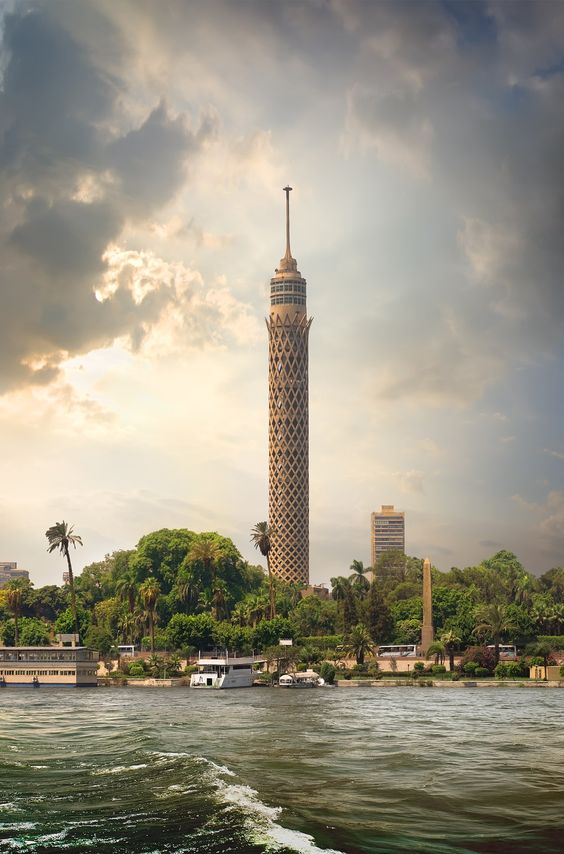
Coptic Museum:
One of the oldest and most prominent museums of Egypt, with the largest collection of Christian and Ancient Egyptian artifacts from all over the world. It is located in Coptic, Cairo. It was founded in 1908 by Marcus Simaika Pasha to house Coptic antiquities.
The museum spreads over an area of 8000 square meters, the land for which was offered by the Coptic Orthodox Church of Alexandria and Pope Cyril V. It is one of the world’s largest museums for traditional Coptic art. The monuments at Coptic museum are an intricate blend of Ancient Egyptian, Roman, Greek, Ottoman and Byzantine traditions, with some traces of Islamic arts and architecture. These artifacts have been carefully bifurcated into different mediums – such as woodwork, stonework, metalwork, manuscripts, hieroglyphs and textiles.
A total of 15,000 objects is on display at this museum. It also houses over 1200 Nag Hammadi manuscripts in an open library. This library is only open to researchers and Egyptology scholars. The building itself is an interesting display. It contains the perfect blend of Egyptian, Roman, and Turkish architectures. The end result is a large and spacious tourist attraction that brings history to life and offers a tour to remember for all visitors.
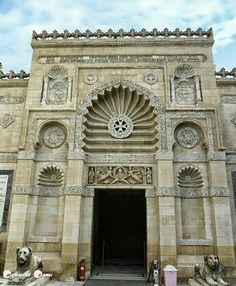
The Hanging Church:
The Hanging Church is another name for the Saint Virgin Mary’s Coptic Orthodox Church in Egypt. It is regarded as one of the oldest churches and was established during the 3rd Century AD. It gets its name from its location – which is directly above a gatehouse of the Babylon Fortress. Ever since the early Roman Empire, the land area surrounding the Church has risen by over six meters. Because of this, the Roman tower is buried beneath the ground and this gives more elevation to the church. A total of 29 steps is to be climbed to reach this church (that’s why it is also known as the Staircase Church). The Hanging Church is the first ever church that was built under Basilica architecture. It houses more than 110 icons and artifacts – most of which date back to the 8th century. The inner sanctuary is made with ivory and has a symbol of Virgin Mary, surrounded by the Twelve Apostles. Outside the main church building, there is a small courtyard. It was constructed at some point during the 11th Century AD as a small extension to hold the increasing number of visitors and worshippers. The Hanging Church is now a World Heritage Site and a popular tourist attraction in Egypt.
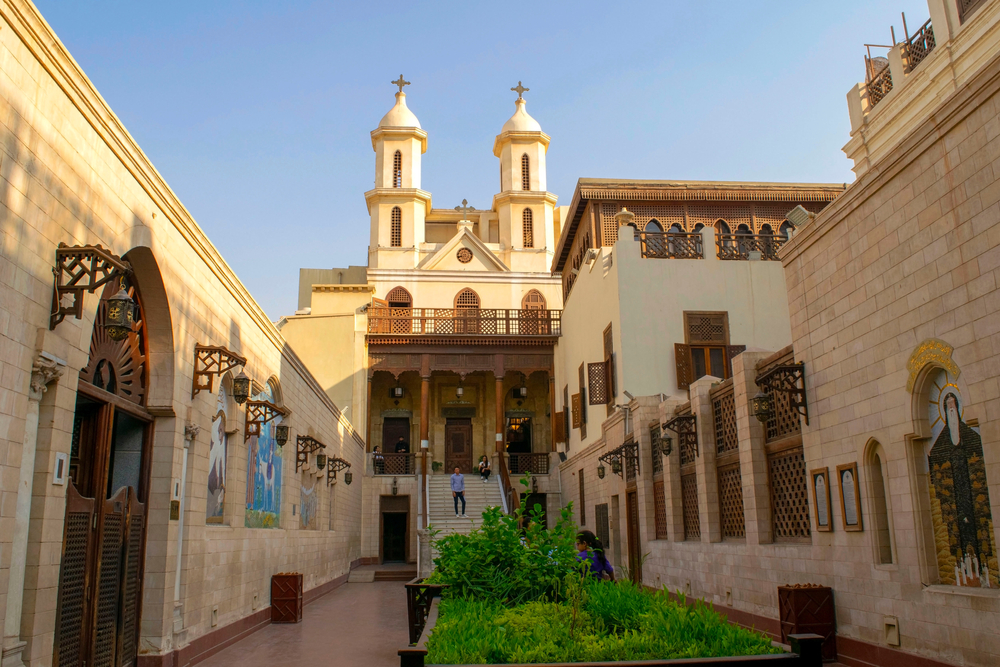
Cairo Museum:
Also known as the Museum of Egyptian Antiquities or the Egyptian Museum, this place offers an extensive collection of some of the most ancient Egyptian antiques. It has over 120,000 different items on display and was opened to the public on October 2015. Cairo Museum was initially constructed in 1835 along the ban.
k of the Nile River. During the 1878 flood, much of the building was damaged and many artifacts were lost. Subsequently, the museum building was relocated to Tahrir Square in 1902 – where it is still situated today. The building spans over two floors. The ground floor features an extensive collection of coins and papyrus – dating back to the ancient world. There are also artifacts from the New Kingdom, which spanned between 1550 and 1069 BC. The first floor contains several artifacts that reminisce of the final two dynasties of Egypt. Touring this floor, you’re likely to come across the tombs of Pharaohs Thutmosis IV, Hatshepsut, Thutmosis III and Amenophis IV. The famous courtier Maiherpi also rests here. Two special rooms are also constructed that house mummies of royal family members of the New Kingdom. In addition, artifacts from the Valley of the Kings make a visit to the Cairo Museum one of the top 10 things to do in Egypt.
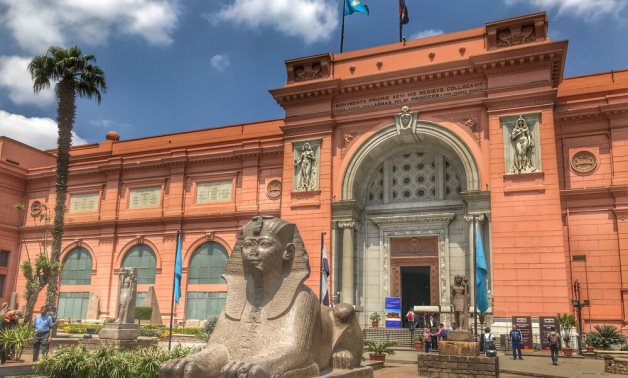
Khan El-Khalili:
A bustling open-air marketplace in Egypt. This bazaar is also one of the main attractions of Cairo city for both locals and tourists alike. The market is predominantly occupied by local vendors and merchants, with a few shops owned by foreigners. During the Fatimid Dynasty of 1st Century AD, the mausoleum of Turbat Az-Zafaaran (or the Saffron Tomb) was located in central Cairo. Following the Black Death era, merchants and travelers relocated the tomb elsewhere and established a small commercial market for trading purposes.
This laid the foundation for Khan el-Khalili market. It lies in the heart of Cairo’s economic zone and overlooks some of the most important historical landmarks of Egypt. Shops in Khan el-Khalili typically sell antiques, local jewelry, and souvenirs.
However, many shops also offer goldsmith services for locals and visitors. Over the past several years, several coffeehouses, eateries, and street food stalls have been set up.
These shops offer traditional Arabic coffee, along with shisha (flavored hookah). The oldest and the most renowned of all coffeehouses in Khan el-Khalili is the Fishawi’s, which was established in 1775. Al-Hussein Mosque is directly adjacent to the marketplace and Al-Azhar University is at a walking distance.
It is not surprising to find several university students flocked up in coffeehouses and hookah lounges in the market.
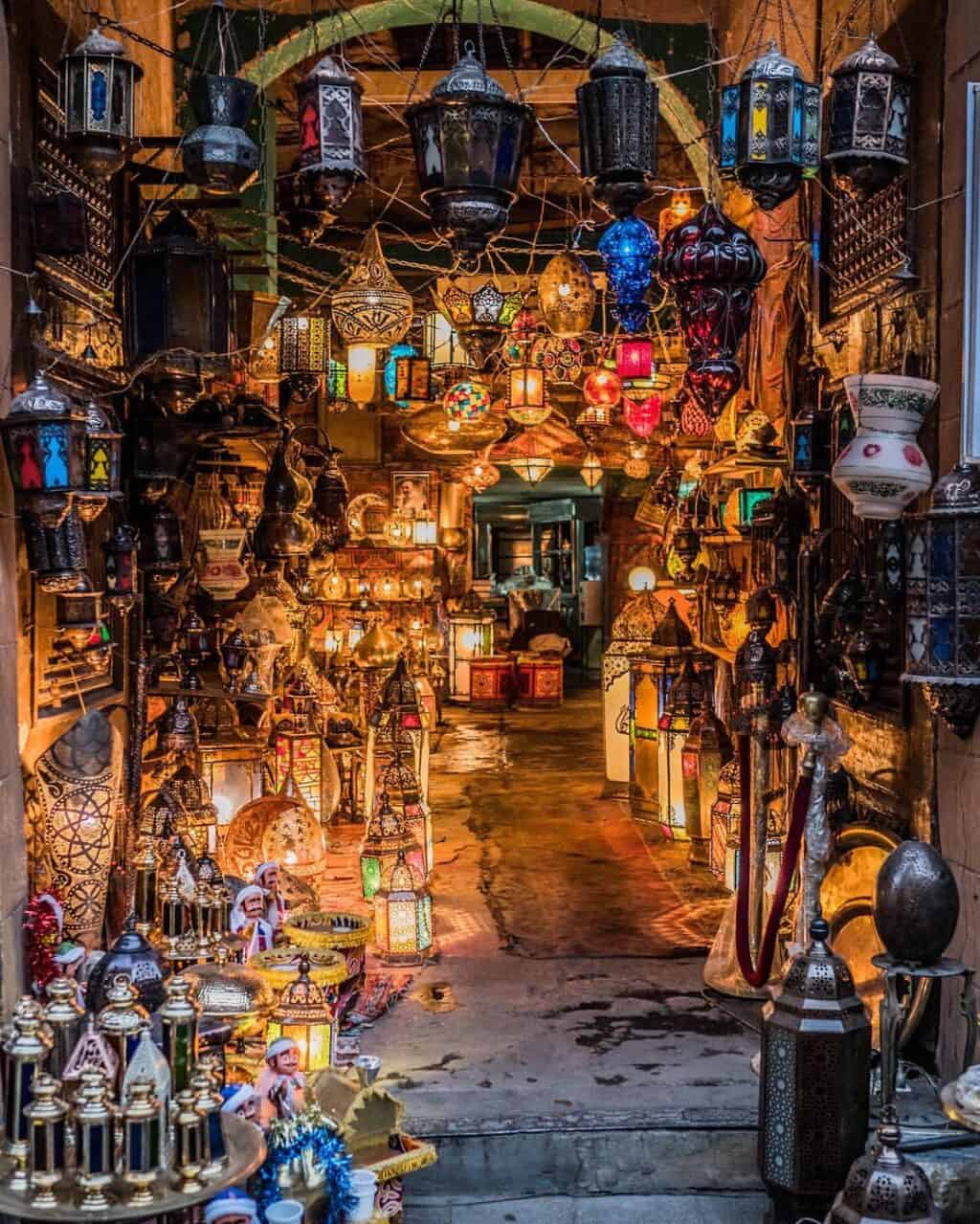
Al-Azhar Mosque:
Located in Cairo, Egypt, was built during the period of Fatimid dynasty. Name of the mosque ‘Al-Azhar’ translates into ‘the most resplendent’ that is thought to allude to Prophet Muhammad’s youngest daughter named Fatimah.
The construction of the mosque was commissioned by a Fatimid caliphate Mu’izz li-Din Allah in the newly established capital in 970. The mosque was the first to be established in the city of Cairo that would, later on, gain the nickname of ‘the City of a Thousand Minarets” due to the presence of many mosques. After its completion, the authorities hired various scholars to teach Islamic laws inside the mosque. The mosque subsequently developed into a great center of learning for the Muslims.
It is currently the second oldest, continuously running university in the world after Al Karaouine University in Umayyad Fes. The university was nationalized by the government after the Egyptian Revolution in 1952. Towards the east side is the prayer hall that has several columns. At the north side is the tomb of Jawhar El-Siqilli who was an important figure during the Fatimid period.
Visitors who intend to visit the mosque are required to dress modestly to respect the local religion.
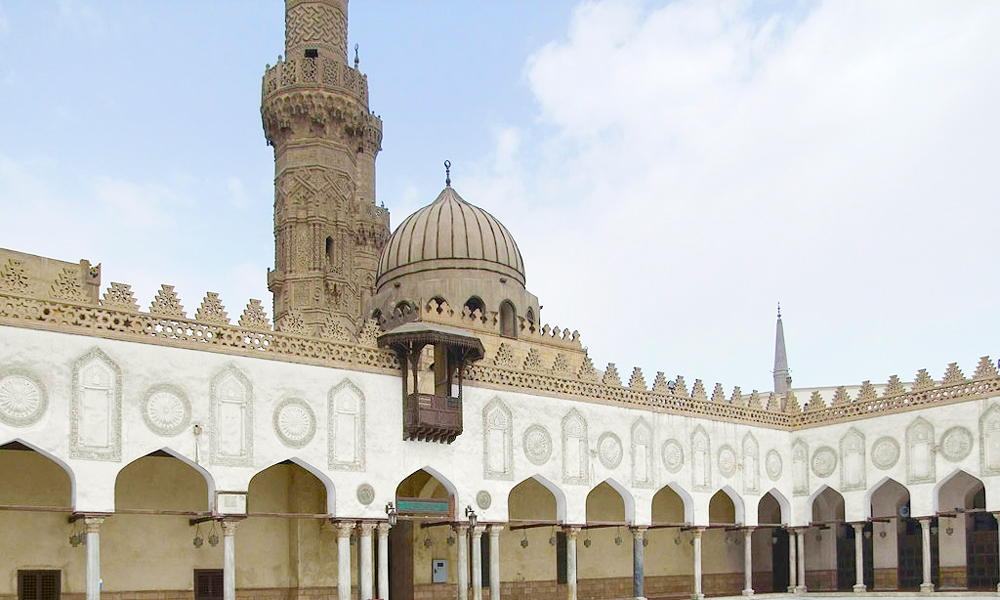
Mosque Of Muhammad Ali:
Muhammad Ali (or Mehmet Ali) Pasha was a well-reputed commander of the Ottoman Army, who went on to become the Viceroy of Egypt. He is widely regarded as the man who created modern Egypt, because of his military and economic reforms during the mid-19th Century. It is, therefore, only fitting that a mosque constructed in his honor lies in the Citadel of Cairo. Mosque of Muhammad Ali was commissioned in 1830.
It serves as one of the leading tourist attractions of Cairo, as well as the most distinctly noticeable landmark of the city from both the eastern and western borders. The entire mosque is made from limestone.
It consists of a large central dome, surrounded by four smaller semicircular domes. Two elegantly-designed minarets with balconies are located on the western end of the mosque that represents Turkish architecture at its finest. A large brass clock tower is located in the middle of the northwestern riwak.
It was presented to the Viceroy by King Louis Philippe of France in 1845. This makes up for a distinct and unique architectural design that leaves all tourists and travelers in a state of awe and overlooks the ancient city of Thebes (now Luxor), offering a spectacular view.

Mosque Of Ibn Tulun:
Undoubtedly, the oldest of all the mosques in Egypt. It is located in Cairo, was constructed at some point during 879 AD, and rests on a small hill called Gebel Yashkur (the Hill of Thanksgiving). According to a famous legend, this was the place where Noah’s Ark came to rest after the Great Flood. In terms of land area, Ibn Tulun is the largest mosque in Cairo. It was constructed in Samarran-style and has some traces of early Abbasid architecture.
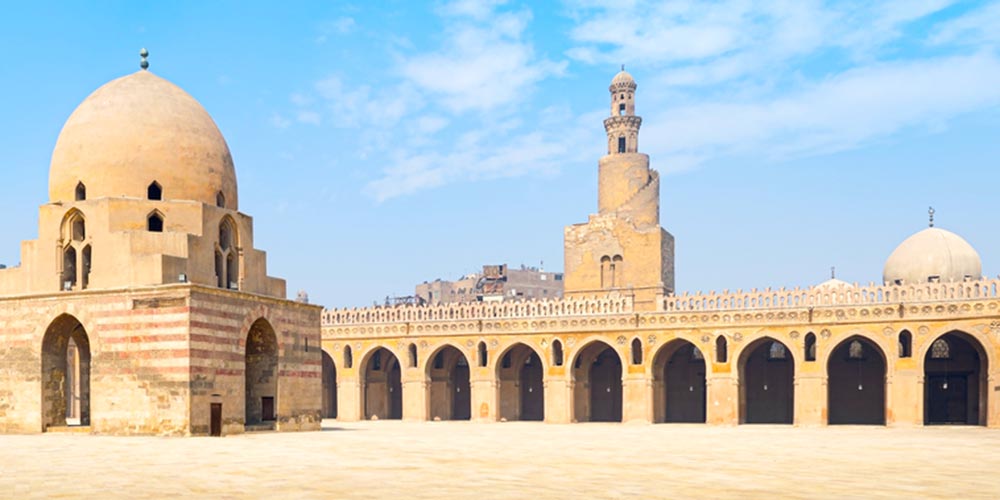
Undoubtedly, the oldest of all the mosques in Egypt. It is located in Cairo, was constructed at some point during 879 AD, and rests on a small hill called Gebel Yashkur (the Hill of Thanksgiving). According to a famous legend, this was the place where Noah’s Ark came to rest after the Great Flood. In terms of land area, Ibn Tulun is the largest mosque in Cairo. It was constructed in Samarran-style and has some traces of early Abbasid architecture.
The mosque is built around a small courtyard and has an ablution fountain in one of its corners. Throughout history, the mosque has been restored and renovated several times. The first known restoration took place in 1177 AD, under direct orders from a Fatimid vizier named Badr al-Jamali. During this time, the interiors were given a Turkish-Ottoman touch. In 1296 AD, Sultan Lajin undertook extensive repair and restoration of the mosque.
Large inscriptions declaring the oneness of God were carved extensively all over the interiors. The most recent restoration took place in 2004 and was ordained by the Egyptian Supreme Council of Antiquities. The Mosque of Ibn Tulun is a place of worship, as well as a popular attraction for all visiting tourists.
Sultan Hassan Mosque:
A large 13th century mosque built during the reign of Mamluk Sultan Hassan. The mosque was built between 1356 and 1363 and was considered a marvel of its time when completed, due to its large size and use of innovative architectural components.
It is an amazing piece of architecture in old Cairo where visitors can take good photos. The mosque served a dual purpose as a place of worship and a Madrassa where children used to take their lessons. It is one of the largest mosques in the world, covering an area of about of 7,906 sq. meters.
The colossal size of the mosque nearly emptied the vast treasury of the Mamluk. The courtyard located inside the mosque, centers on a domed ablution fountain that was probably an addition during the reign of the Ottoman Empire.
Liwans or sitting rooms are located on the four sides of the courtyards that are lit by red-and-black rims and hanging lamp chains. Inside the mosque is a bronze door that is decorated with radiating gold and silver stars and which leads into the tomb of Sultan Hasan. The tomb overlooks the old stomping ground of the sultan on Midan Salah al-Din.
